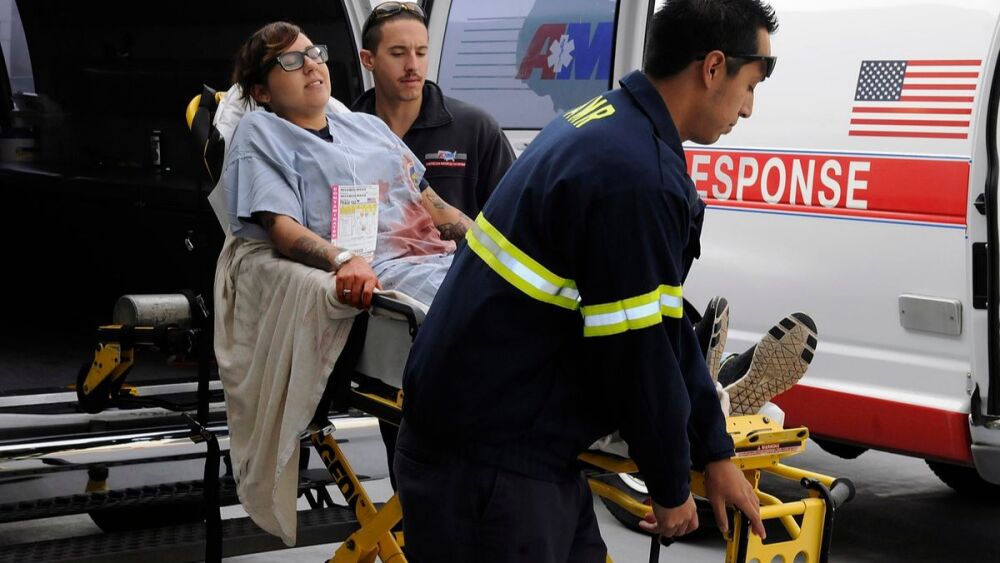Content provided by CentralSquare Technologies via GovThink.com
By Steve Seoane for EMS1 BrandFocus
Around 84 percent of first responders have experienced a traumatic incident while on the job. While some lose sleep over it, the health of others may suffer in different ways.
The stress of being the first one on an accident scene and witnessing raw distress and destruction has a way of compounding into long-term negative effects for first responders. Whether the work is physically demanding, like battling a wildfire or carrying people out of a burning building, or mentally taxing, like performing life-saving aid to victims in a mass casualty event, first responders go through an inordinate amount of wear, tear and stress over the course of their careers. First responders who are continuously exposed to traumatic situations face a greater risk of suffering from PTSD, anxiety, depression and heart attacks.
Yet when a crisis hits, no matter the risk, there’s never a question – first responders are always there to help people make it through a crisis. But one question public safety agencies consistently ask is: Who is looking out for first responders? And how can they build upon existing efforts?
What’s the answer?
To ensure the physical health and mental resiliency of first responders, one strategy many public agencies are considering is wearable technology that monitors when a first responder undergoes excessive physical strain and stress while on the job. In doing do, agencies can potentially mitigate the stress from escalating further by enabling first responders to be more proactive with subsequent treatment.
Wearable tech that can monitor a first responder’s vitals has been arriving in the form of smartwatches, shirts, jackets and head mounts over the past few years. Equipped with sensors, these devices can monitor everything from heart rate to electrical impulses. For example, jackets can utilize light sensors that automatically adjust to their surroundings while head-mounted displays put real-time health data in front of first responders.
Embedded sensors in wearable tech can help discover previously undetectable warning signs that can occur during the middle of a crisis. For example, if a first responder’s heart or respiration rate gets too high, the responder can be alerted instantly that they are undergoing too much stress, and if the situation and manpower allows, they are empowered to take a step back. It can also alert the command center to spot an elevated heart rate resulting from a chase, an officer down or other urgent injury so that the officer can be removed from the stressful situation or send for back-up or dispatch assistance.
Smart, wearable technology has the power to detect tiny, almost invisible details about the environment in which first responders will find themselves. Sensors can evaluate the air quality around first responders, tracking things like temperature, humidity and biological, chemical and radiation exposure. When responders are equipped with this type of information, they’re in a better position to focus on the incident while remaining confident about their own safety.
How does it help?
An old adage that airlines commonly use rings true – in the event of an emergency, put on your own oxygen mask first before helping others. In order for first responders to perform at their best when others need them the most, they need to be in good health. When agencies are able to securely provide this type of biometric health data to first responders, they can be alerted to unusual readings that indicate trouble and better address potential health risks before they worsen.
Another way the health of first responders can be prioritized that doesn’t require any additional hardware is right at the dispatch center itself. By monitoring the types of calls each officer is dispatched to, communication centers can prevent successive high-stress calls going to the same officer.
For example, when an officer clears a traffic accident with fatalities, instead of dispatching that officer to an incoming domestic disturbance call, technology can recommend that officer be dispatched to a lower stress call, such as a property check, report of a burglary or a stolen vehicle. The intent is to allow the officer time to process and reduce stress levels rather than escalating from one call to the next.
First responders have little to no control over the dangerous situations and environments they find themselves in. Wearable tech can help them regain some of it back when it comes to their health.
Agencies should consider wearable technology as a strategy to prioritize the long-term health of their front-line first responders because when first responders feel as if their agencies are protecting them from harm, they can better protect their communities.












